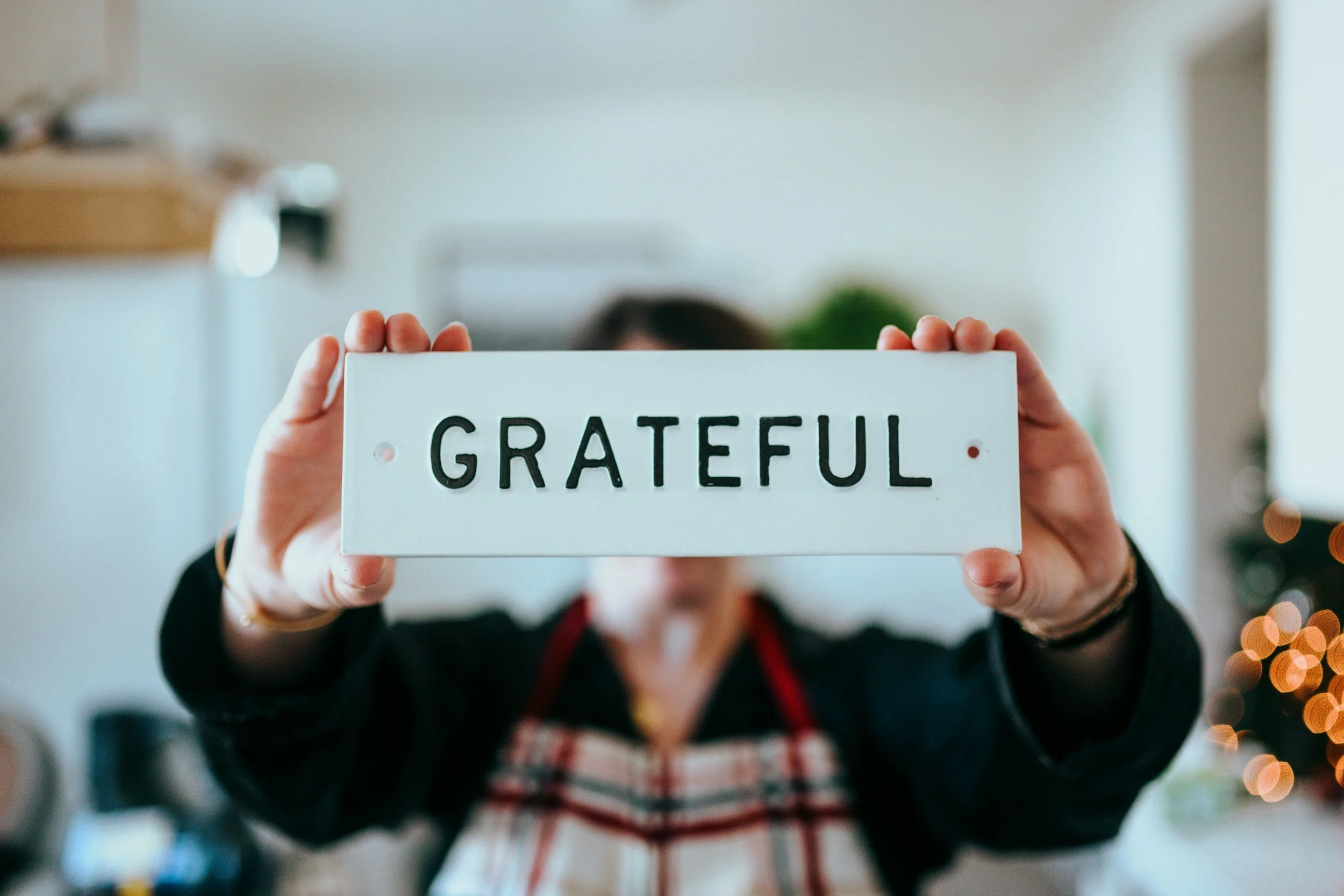Balancing Gratitude with Grief: Making Space for Both
The holidays are filled with “shoulds.”
Holidays bring up many emotions, all with different colors and energy. Some colors are harder though and to navigate these blue feelings alone can be challenging when the “shoulds” take over.
You should feel thankful.
You should feel joyful.
You should feel festive.
What if, instead, you feel a mix of gratitude and sadness?
What if this year feels heavier, or quieter, than others?
You’re not doing it wrong. You’re just human and you’re recognizing the sadness in a day that may have been joyful before.
When Gratitude Meets Grief
There’s this quiet, complicated space that exists when you’re grateful for what you have but still aching for what’s gone.
It might show up when you set the table and notice the empty chair. Or when you scroll through photos and realize how much has changed.
You can feel deep love and deep loss in the same breath.
You can smile genuinely at what’s in front of you while still missing who or what isn’t.
That’s not a contradiction; that’s being human and recognizing there can be two truths in a situation.
Grief doesn’t cancel gratitude, and gratitude doesn’t erase grief. They can live side by side, trading places throughout the day, sometimes even within the same moment.
Letting Yourself Feel the Mix
Sometimes gratitude is loud and full of laughter, connection, and the kind of joy that bubbles up easily.
Sometimes, it’s quieter and shows up as a soft sigh, a memory that still hurts but also warms you, or the simple comfort of making it through another day.
Letting both exist is an act of emotional strength. It means you’re not shutting out the hard stuff, but you’re also not drowning in it.
You might find yourself crying while setting the table, then smiling through tears as you remember someone you love.
That’s healing in motion and allowing yourself to hold multiple energies connected to memories with your loved one during the holiday.
The Pressure to “Stay Positive”
We live in a culture that tends to rush through grief. People say things like “They’d want you to be happy” or “Focus on what you have,” and while those statements might come from a good place, they can make grief feel like something you have to hide.
Grief doesn’t need fixing though, instead it needs witnessing.
You don’t have to choose between being grateful and being sad. You just have to allow space for both because when you let them coexist, something powerful happens: gratitude starts to feel real again. It is no longer forced, nor performative, but rooted in authenticity.
Practicing gratitude alongside grief prevents one from being overwhelmed, offering relief and space to feel and explore emotions.
Ways to Honor Both Gratitude and Grief
If this season feels complicated, try approaching it with curiosity instead of judgment.
Light a candle for someone you miss while naming one thing you’re grateful they taught you.
Write a letter to your loved one, to yourself, or to the part of you that’s still healing.
Give yourself permission to skip traditions that feel painful this year and create new ones that bring comfort.
Allow your emotions to ebb and flow. There’s no timeline for how long grief lasts or when gratitude should arrive.
You don’t have to make the holidays cheerful; just be honest to yourself.
A Gentle Reminder
Gratitude and grief are both love stories; one for what is, the other for what was. Holding them together takes courage, compassion, and presence.
So if your heart feels both full and heavy this season, take a breath and remind yourself:
You’re allowed to hold both joy and ache. That’s what it means to be alive.
And as we move into December, we’ll talk about how to slow down, reflect, and close the year with compassion instead of pressure, giving yourself permission to rest, release, and begin again.
Ready to go deeper?
If you’re a client interested in EMDR intensives or a therapist looking for continuing education opportunities focused on trauma, dissociation, and resourcing, visit Breaking Limitations Therapy & Consultation.
And if you’re a multi-professional or entrepreneur craving more clarity, structure, and balance, explore Breaking Limitations Coaching for on-demand courses and 1:1 Clarity & Strategy Sessions designed to help you align your work and life with what matters most.
This blog is educational and not a substitute for therapy. If you or someone you love is struggling with thoughts of suicide, please contact local emergency services or your region’s crisis line immediately.

